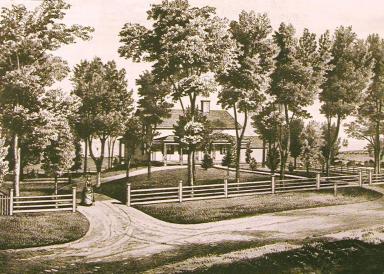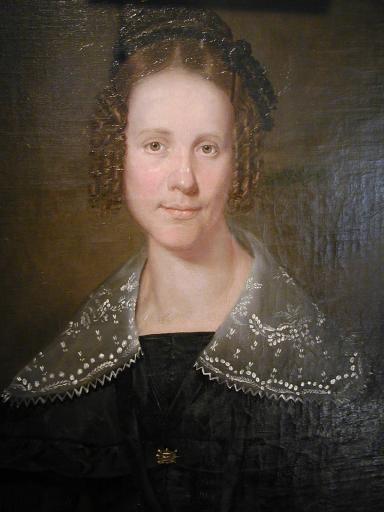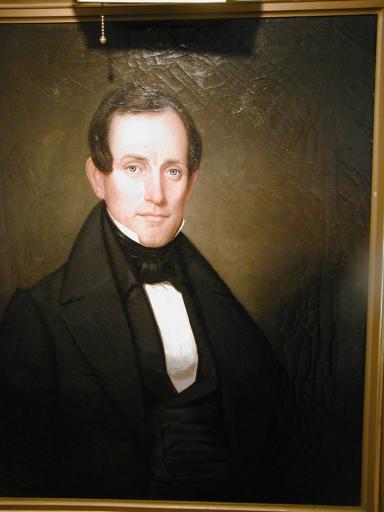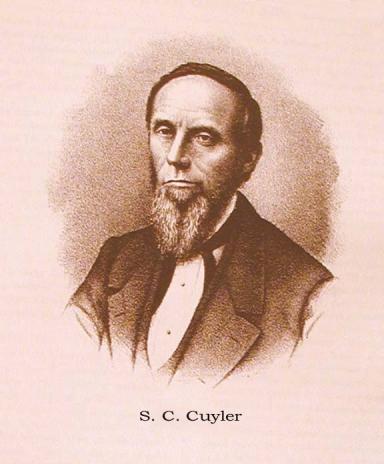If you find errors OR have additional information about this site, please send a message to contact@waynehistorians.org.
Underground RR Terminus NYS Hist Marker / Samuel and Elizabeth Cuyler Home Home
| Historic Site #: | 14-009 (Exists) Type: B2,F2 | Town: | Williamson | ||
| Site Name: | Underground RR Terminus NYS Hist Marker / Samuel and Elizabeth Cuyler Home Home | GPS Coordinates: | 43.280247, -77.169108 | ||
| Address: | 4507 Lake Rd. Pultneyville New York at entrance to Forman Park | ||||
| Description: | |||||
| 🔊Audio: |
| Historic narrative: | |||||
Site was home of Samuel and Elizabeth Julia Speed Cuyler, and was a northernmost terminus/station on the Underground Railroad. Land was donated to Wayne County by Forman family and is the first Wayne County park formed. Description: A small five-bay story-and-a-half house, the Cuyler house became generally known throughout the section as a northern terminus of the underground railway". It dated from the early nineteenth century and bore marks from British guns that fired on Pultneyville during the War of 1812. Some considered it “the finest house in all the country round about it.” The house remained standing in the Cuyler family until the 1930s, when it was demolished to create the present B. Forman Park. Significance: Samuel C. Cuyler (1808-1872), descendent of major Dutch families in New York; Elizabeth Julia Speed Cuyler, born in a slave owning family in Virginia; and son Ledyard Cuyler kept the most important Underground Railroad station on Lake Ontario’s shore between Oswego and Rochester, in Pultneyville, New York. The Cuylers sent freedom seekers to Canada on steamboats operated by a relative, Captain Horatio Nelson Throop, aided by small boats sailed by Ledyard Cuyler and an African American called “Black Bob.” In 1838, Samuel Cuyler championed the right of black abolitionist Samuel R. Ward to speak. Believing that the Declaration of Independence and the Constitution were antislavery documents, Cuyler supported the Liberty Party in 1840 and the Free Soil Party in 1848. In 1855, he was elected to the New York State Senate as a Republican. For seven years, he served as U.S. customs collector in Pultneyville. Introduction: From the nineteenth century to the present, local people have kept the knowledge of Samuel C. Cuyler’s work on the Underground Railroad alive. Beginning 1877, only five years after Cuyler’s death (while his widow Elizabeth Cuyler and his son Ledyard Cuyler, who shared this work with him, were still alive), the History of Wayne County published details of Cuyler’s work: Mr. Cuyler’s house was one of the northern depots of the underground railroad. The fugitives of slavery would rendezvous at the houses of William R. Smith, of Macedon, Griffith Cooper, of Williamson, and Dr. Cook, of Sodus, and would be sent on here in the night to be forwarded to Canada by Mr. Cuyler. Often did Mr. Cuyler’s eldest son, Ledyard, drive to Sodus and return after dark with a wagon load of freedom seekers. Captain H.N. Throop was then commander of one of the lake steamers, and many people escaping from slavery were forwarded by this boat. When Mr. Cuyler would go down to the dock with his black friends he would remark,-- “Captain Throop, I have some passengers for you” The freedom seekers would be placed on board, but it is said that when they reached Charlotte [the port on Lake Ontario closest to Rochester], the only point where they could be taken from the boat, there were never any negroes in sight, as they had been secreted. How many freedom seekers were thus helped to Canada by Mr. Cuyler and Captain Throop is not known; but, as they were both active men, we know that they were capable of caring for all that came. In 1877, the History of Wayne County noted that Samuel C. Cuyler’s associates in the Underground Railroad in Pultneyille were his son, Ledyard Cuyler, who transported wagonloads of freedom seekers from Sodus Point, just east of Pultneyville, and steamboat captain Horatio N. Throop. Throop’s cobblestone house, built in 1832, still stands at 4184 Washington Street, directly across from what was once Pultneyville’s main dock. The History of Wayne County also noted that African Americans came to Cuyler from stations kept by William R. Smith in Macedon, Griffith Cooper in Williamson, and Dr. Cook in Sodus. A 1907 article in the Rochester Democrat and Chronicle, apparently based on an interview with Ledyard Cuyler, also mentioned William R. Smith, Griffith Cooper, and added several other names, including that of A.B. Smith. Both Smith families, as well as the Cooper family, were known abolitionists and Underground Railroad activists associated with Quakers in Farmington, New York. Many people came to the Cuylers not from Philadelphia but through Ohio and western New York, up through Allegany County (on the southern border of New York State and Pennsylvania), through Canandaigua and Macedon to Pultneyville and that stations in this area were about twelve miles apart. | |||||
Uncovering the Underground Railroad, Abolitionism, and African American Life in Wayne County, New York, 1820-1880 pp 389-393
We Shall Overcome YouTube Video




